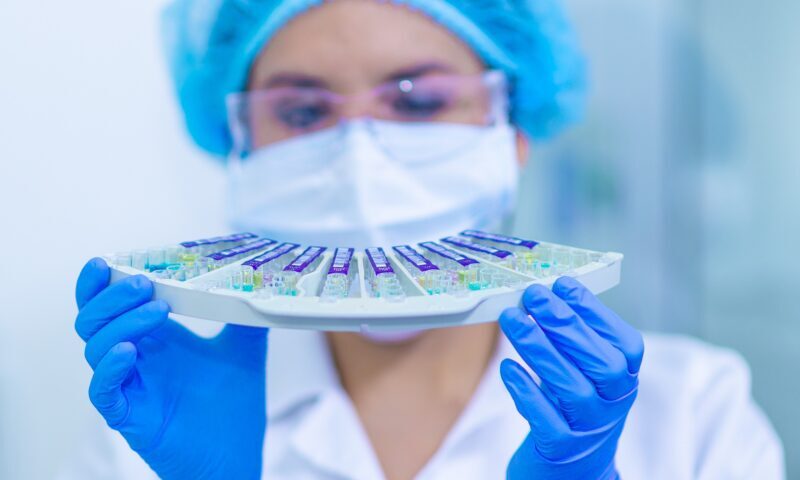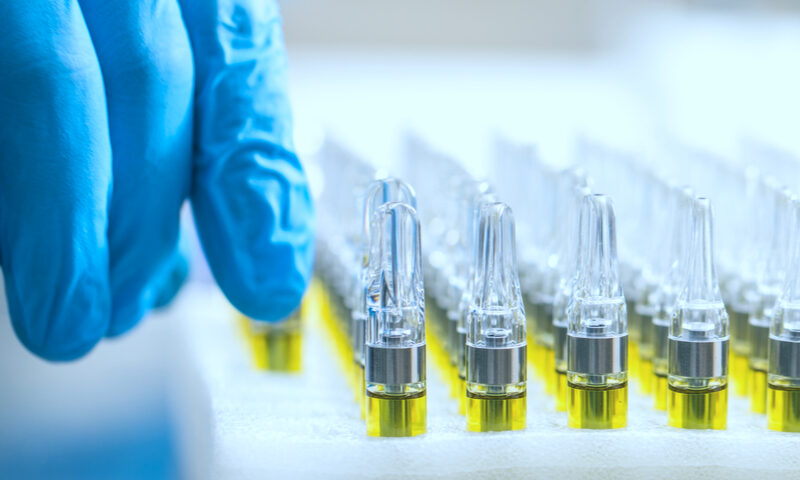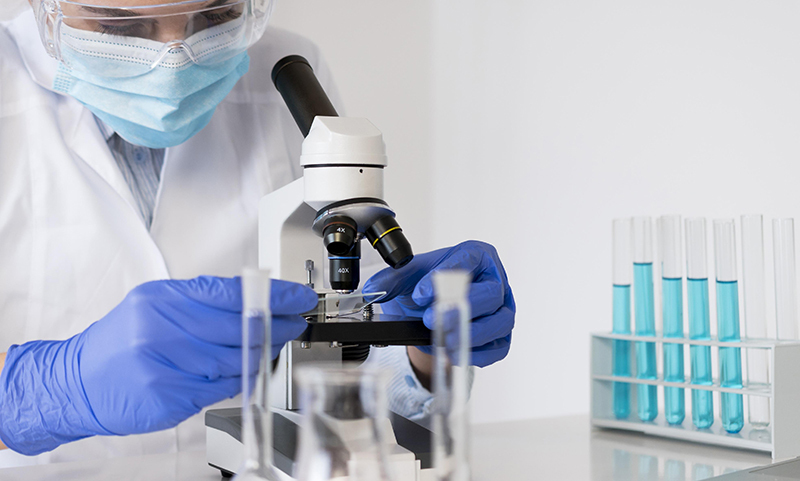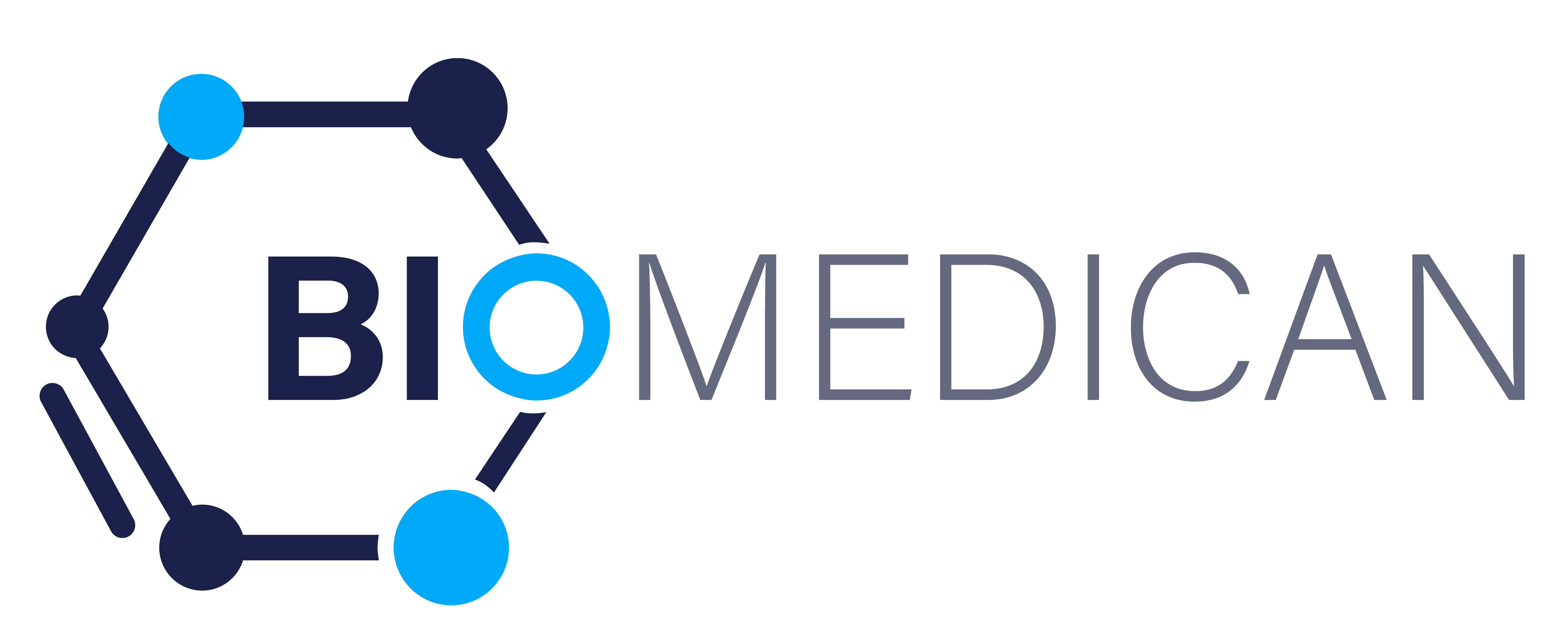Biomedican: scientific research and production know-how
Definition of cannabinoids
Advanced cannabinoids research found over 400 compounds in cannabis plants, of which more than 120 compounds are regarded as cannabinoids. The cannabinoids are a group/family of compounds that are structurally diverse and have a large number of biological targets. These compounds are found as phytocannabinoids in the Cannabis Sativa plant and as endocannabinoids within the body, acting as intracellular lipid messengers. Some cannabinoids with rare nature are difficult to isolate from plants and named rare cannabinoids.
What are they for?
Advanced cannabinoids research explored endless health benefits of cannabinoids. Each cannabinoid produces its effect by interacting with cannabinoids receptors which are critical to maintaining various physiological functions. Cannabinoids receptors were first discovered in the 1980s. The two types are CB1 and CB2 receptors that are G-protein coupled receptors. The CB1 receptor is present in the brain, spinal cord, peripheral nervous system, and organs such as the urinary tract, reproductive tract, and GIT. The CB2 receptor is generally expressed on the surface of immune cells. Cannabinoids interact with these receptors and regulate various processes critical to the body, such as learning, memory, neuronal functioning and development, appetite, digestion, inflammation, overall mood, sleep, metabolism, and pain perception.

Our unique method
Chemical synthesis is the creation of compounds through artificial means by a chemical reaction. Compounds derived from chemical synthesis often possess components that differ from the desired naturally occurring compound. These components can be toxic and result in undesirable side effects.
Biosynthesis is the production of the desired compound through the natural means of an organism’s biological processes. Biosynthesis produces identical compounds to those found in nature, lending itself as the optimal pathway for the manufacture of cannabinoids and carotenoids identical to their naturally occurring counterparts.
Biomedican’s proprietary yeast Yarrowia Lipolytica (YL) is the ideal micro-organism for cannabinoid biosynthesis.
Biomedican’s YL has been optimized for the efficient production of CBGA and other rare cannabinoids. This optimization is a result of genetically engineered enzymes NphB and THCA synthase.
In contrast, non-proprietary YL, which contains unmutated NphB, produces lower levels of CBGA with large amounts of undesirable by-products.
Biosynthesis produces compounds that are 100% pure, more environmentally sustainable, cheaper, and several months faster to produce. This efficient method of production has been used by renowned drug manufacturers to produce consistent results and reliable products.
Our patented method, which can be upscaled to produce larger volumes, involves biosynthesis of pure cannabinoids with the use of proprietary yeast strains. (Patent pending US20200165644A1).
The main areas of research on cannabinoids and applications
The Discovery of cannabinoids receptors and their regulation by cannabinoids opened a new window in cannabinoids research. The first medicinal property of cannabis was reported in 1840, after which curiosity led to the evolution of the field of cannabinoids research. Various studies found the therapeutic potential of cannabis and cannabinoids.

Cannabinoids in the food industry
Various non-psychoactive cannabinoids are now a new ingredient in edibles, along with probiotics and omega-three fatty acids. Cannabinoids are infused in different edible products such as cakes, candies, wine, chocolates, and tea.

Cannabinoids in therapeutics

Cannabinoids in the cosmetics industry
Topical formulations of cannabinoids such as cannabis oil are expected to hit the global market of $3.19bn by the end of 2026.
Types of cannabinoids
Most commonly found cannabinoids in Cannabis Sativa include.
CBD. Cannabidiol is considered as one of the most popular forms of medical cannabis. Cannabidiol is part of one of the very first FDA-approved medicine Epidiolex.
THC. Tetrahydrocannabinol is a primary psychoactive compound of the Cannabis Sativa plant. It interacts with CB1 and CB2 receptors and causes euphoria.
CBG, CBG (cannabigerol), is regarded as the mother of all cannabinoids. Although CBG is found in smaller quantities, i.e., only 1% in cannabis plants, it has significant importance due to its acidic form CBGA (cannabigerolic acid), the parent compound of all other cannabinoids. CBG/CBGA has entered various medicinal industries like pharmaceuticals and consumer industries like natural health, food, cosmetics, and nutraceuticals.
CBN. Cannabinol (CBN) is a non-intoxicating compound, naturally present in THC and CBD-rich strains of Cannabis Sativa. CBN shows promise for positive impacts on appetite, neurological health, and potentially sleep. At this time, there is not enough evidence to draw definitive conclusions around this cannabinoid’s effect on sleep, but the results of ongoing studies will provide more details.
THCA. Tetrahydrocannabinolic acid (THCA) is the non-psychoactive cannabinoid within the Cannabis plant from which tetrahydrocannabinol (THC) is derived. THCA does not cause the sensation of a high and shows therapeutic promise through its anti-inflammatory, antispasmodic, and neuroprotective properties.
THCV. Tetrahydrocannabivarin (THCV) is one of the 113 cannabinoids found within the cannabis plant and analogous to its well-known counterpart, tetrahydrocannabinol (THC). THCV and its precursor tetrahydrocannabivarin acid (THCVA) reduce appetite, assist sugar metabolism, have neuroprotective properties, and stimulate the body’s ability to grow bone.
CBDV. Cannabidivarin (CBDV) is structurally similar to CBD but is different enough to be classified separately. This compound is known chiefly for its potential antiepileptic benefits and has been researched for its ability to treat inflammation, pain, and neurological disorders. This rare compound is only present in the cannabis plant in minimal amounts but may strengthen other cannabinoids’ interaction through the entourage effect.
Cannabichromene (CBC), Cannabidivarin (CBDV), and Cannabigerovarin (CBGV) are rare cannabinoids of great medical importance.
Rare cannabinoids
The human body contains different cannabinoid receptors that help regulate critical processes, including learning, memory, neuronal development, appetite, digestion, inflammation, overall mood, sleep, metabolism, and pain perception. This considerable involvement of cannabinoid receptors, critical to many physiological systems, underscores their potential as pharmaceutical targets.
Pharmacological research has uncovered several medical uses for cannabinoids, which bind to cannabinoid receptors. They’ve been shown to help with pathological conditions such as pediatric epilepsies, glaucoma, neuropathic pain, schizophrenia, and have anti-tumor effects and promote the suppression of chemotherapy-induced nausea. This ongoing research is becoming more prevalent and has the potential to uncover therapeutic uses for an array of cannabinoids.
In addition to the medical field, other prominent sectors have adopted the use of cannabinoids. There is an increasing demand for cannabinoids in inhalables, the food industry, and in hygienic and cosmetic products. Veterinary uses for cannabinoids are also prevailing. The use of naturally occurring cannabinoids reduces the need for synthetic alternatives that may produce harmful off-target effects.
Although the most recognized cannabinoids are Tetrahydrocannabinol (THC) and Cannabidiol (CBD), many other non-inebriating cannabinoids exist. These cannabinoids are rare as cannabis plants produce them in tiny quantities compared to THC and CBD. As their identity gains prevalence, their medical uses also surface:
- Tetrahydrocannabinolic Acid (THCA) has anti-inflammatory, antispasmodic, and neuroprotective properties.
- Cannabigerol (CBG) and its precursor Cannabigerolic Acid (CBGA) are anti-inflammatory, anti-bacterial agents and stimulate bone growth.
- Cannabinol (CBN) and its precursor Cannabinolic acid (CBNA) help regulate sleep and mitigate insomnia, anxiety, and pain.
- Tetrahydrocannabivarin (THCV) and its precursor Tetrahydrocannabivarin acid (THCVA) assist memory, reduce appetite, have neuroprotective properties, and stimulate bone growth.
Those unique qualities of rare cannabinoids open an enormous opportunity to create new drugs and food supplements for treating various medical conditions and improving the quality of life.
Rare cannabinoids exist in minimal quantities in cannabis plants, making their extraction and purification inefficient, costly, and environmentally taxing. It takes 10 kilograms of cannabis plants to produce less than 2 grams of rare cannabinoids. Cannabis cultivation is labor, time, and energy-intensive and can produce inconsistent yields prone to contamination from pests, mold, and pesticides. Significant regulatory oversight is also necessary during the handling of cannabis plants, which contain THC – a Schedule I compound in the United States.
Chemical synthesis of rare cannabinoids has become the leading method for the production of these rare, high-value compounds. However, chemical synthesis leads to the production of non-naturally occurring forms of these cannabinoids, which can have unwanted side effects. To overcome the large gap in the supply chain, reduce the environmental footprint, decrease the time of production, circumvent regulatory oversight, and produce high-quality cannabinoids with the exact chemical structures as naturally occurring cannabinoids, Biomedican uses a method of production called biosynthesis.
Biosynthesis is a process that has been used for many years in the pharmaceutical and agricultural industries to produce desired compounds in large quantities. Biosynthesis revolutionizes the production of cannabinoids by reducing the cost of their production by 70-90%. It also reduces the time of cannabinoid production from several months (in the case of cannabis cultivation) to just a few days.
During biosynthesis, an organism converts one compound into another through natural metabolic processes. Biomedican has a patented oily yeast strain (Yarrowia lipolytica or “YL”), an organism used to produce rare cannabinoids. Our proprietary YL contains genetically enhanced enzymes (NphB and THCA) that allow for the highly efficient production of rare cannabinoids during fermentation. Just as a cannabis plant stores cannabinoids in oily droplets, YL has oily compartments for the production of cannabinoids, which allow it to bypass the anti-fungal properties of cannabinoids. Oils and cannabinoids are derived from the same initial compounds, so an increase in oil production means greater cannabinoid production. YL can yield 80% of its weight in oils, making it an efficient micro-organism for cannabinoid production.
In short, our cannabinoids are biosynthetically produced by our proprietary yeast, which allows for the efficient, cost-effective, environmentally friendly production of large amounts of rare cannabinoids to meet increasing market demand.

Organizations involved in research on cannabinoids
The various organization that is involved in cannabinoids research includes but not limited to The International Cannabinoid Research Society, International Cannabis and Cannabinoids Institute – ICCI, Canadian Centre on Substance Use and Addiction (CCSA), Alliance for Cannabis Therapeutics, American Alliance for Medical Cannabis, American Medical Marijuana Association, and much more.
Recent discoveries in cannabinoid research
Italian researchers found two more cannabinoids, THCP (tetrahydrocannabiphorol) and CBDP (cannabidiphorol). These interact with the CB1 and CB2 receptors. The new compound. THCP is found to be 30 times more psychoactive than THC due to its higher binding ability for the CB1 receptor. Studies also found that cannabinoids receptor activation ameliorate inflammatory bowel disease (IBD) and protects from colitis by activating hematopoietic cells and protecting enterocytes.
The uniqueness of the Biomedican’s cannabinoid method of production
A biosynthetic platform uses the principles of synthetic biology to generate a product. Synthetic biology is defined as “a field of science that involves redesigning organisms for useful purposes by engineering them to have new abilities.” Biomedican’s cutting-edge biotechnology methods are remodeling the production of high-value compounds. These biosynthetic compounds are pharmaceutically pure and 100% identical to ones found in nature at a fraction of their cost, making them promising contenders to replace synthetic and plant-extracted analogs.

Medical Psychedelics
Psychedelics are psychoactive substances that activate serotonin receptors, thus alter perception, mood, and cognitive processes. Medical psychedelics, also known as hallucinogens, belongs to one of the oldest psychopharmacological agents that have been used in the past for pleasure and associated healing powers. Clinical research and developments on psychedelics halted for about half a century due to its mind-manifesting capability and high abuse potential. However, limited research on psychedelics has revived to assess its therapeutic efficacy and psychopharmacological properties. Recent research observed the medical benefits of psychedelics as an adjunct topsychotherapy. Medical psychedelics have established efficacy in the management of anxiety, addiction, and Posttraumatic stress disorder.
Anxiety: Clinical trials conducted on terminally ill patients in Switzerland observed a significant decrease in state anxiety. Medical psychedelics such as LSD and psilocybin have shown a promising effect in improving mood and ameliorating end-of-life anxiety without any clinically significant adverse effect.
Addiction: Medical psychedelics have proven efficacy in treating addiction and managing symptoms associated with drug dependence. Many observational studies concluded that psilocybin-assisted psychotherapy could treat patients dependent on alcohol, tobacco, and ayahuasca. The studies observed a noticeable improvement in mental health and reductions in self-reported drug use without clinically significant or lasting harms.
Posttraumatic stress disorder: Medical psychedelic-assisted psychotherapy has promising health benefits in PSTD patients. Recent research observed a significant and sustained reduction in the Clinician-Administered PTSD Scale (CAPS) without serious adverse effects.
The word “psychedelics” is an umbrella term covering many psychoactive substances with mind-manifesting ability. These psychedelics for clinical trials or medical use are naturally found in trees, vines, seeds, fungi, and leaves. A few essential medical psychedelics that can be biosynthesized in laboratories include:
Psilocybin: Psilocybin, also known as magic mushrooms, is a medical psychedelic that can alter mood, thoughts, and perception. There are over 15 varieties of psilocybe mushrooms, including Psilocybe semilanceata, Stropharia cubensis, and Conocybe species. Approximately 0.5% psilocybin is found in dried mushrooms which is not enough to meet its market demand. Therefore, Biomedican has developed a biosynthesis platform to produce psilocybin more readily at cheap rates.
DMT: DMT or N,N-dimethyltryptamine is a naturally occurring tryptamine found in plant and mammalian brains. DMT as a neurotransmitter acts on the serotonergic system and other known neurotransmitter systems. The research found that endogenous DMT is involved in "psychosis, normal attributes and experiences such as creativity, imagination and dream states, maintenance of waking reality, altered states of consciousness." More significant clinical research is required to assess these medical benefits.
5-MeO-DMT: 5-Methoxy-N,N-dimethyltryptamine (5-MeO-DMT) is a nonselective serotonin (5-HT) agonist. It is naturally present in the bark of Dictyoloma incanescens and secretions of Sonoran Desert Toad. 5-MeO-DMT is estimated to be more efficient in treating anxiety, PSTD, and drug dependence than DMT. More advanced research is needed to map natural sources of the genome to biosynthesize 5-MeO-DMT in the laboratory.
Mescaline: Mescaline is a medical psychedelic found in peyote cactus. Hallucinogenic effects of mescaline are due to the stimulation of serotonin and dopamine receptors in the CNS. It is 30 times less potent than psilocybin. Mescaline helps reduce suicidal thoughts, depression, anxiety and improves critical thinking.
Medical psychedelics pique the global market interest due to their potential medical and health benefits. These beneficial medical psychedelics exist in minimal quantities in their natural sources, i. e mushrooms, plants, and animals(toads). For instance, dried mushroom consists of 0.5% psilocybin. The conventional extraction and purification methods to yield psychedelics are inefficient, energy-intensive, and costly. The resulting product is prone to contamination from pests, mold, and pesticides. Similarly, medical psychedelics produced from chemical synthesis have non-naturally occurring forms that can profoundly cause an adverse effect in clinical trials and psychedelic-assisted psychotherapy.
Biomedican‘s cutting-edge biotechnology methods are remodeling the production of psychedelics for the clinical trial. Our team of dedicated scientists has genetically optimized yeast to produce psilocybin, DMT, 5-MeO-DMT, and mescaline. These biosynthetic compounds will be pharmaceutically pure and 100% identical to ones found in nature at a fraction of their cost, making them promising contenders to replace synthetic and extracted analogs.







